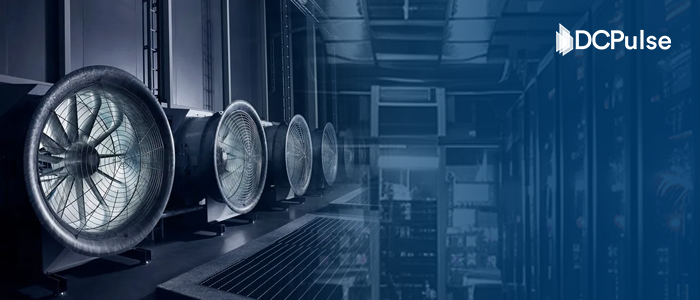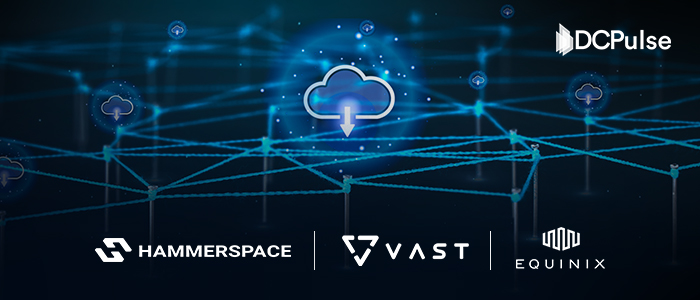When Cooling Becomes the Problem
At hyperscale, even heat becomes exponential. What was once a manageable byproduct of computation now spirals into a core bottleneck, throttling performance, draining power, and straining the planet’s resources.
And as AI and Bitcoin mining stretch rack densities to unprecedented extremes, traditional cooling solutions are no longer just inefficient; they’re obsolete.
What if the cooling system didn’t just mitigate heat, but anticipated it?
What if the racks could clean, filter, self-diagnose, and even heal, without ever powering down?
Today, that vision is already taking shape.
A liquid-cooled supercomputer humming away in the middle of a desert, once a thought experiment, is now a blueprint.
In a world where data center cooling can devour up to 40% of total energy, the next frontier isn’t just thermal efficiency; it’s automated resilience. That means rethinking materials, maintenance, and intelligence from the ground up.
Traditional Air-Cooled Data Center vs MIDAS Immersion Cooled Data Center:
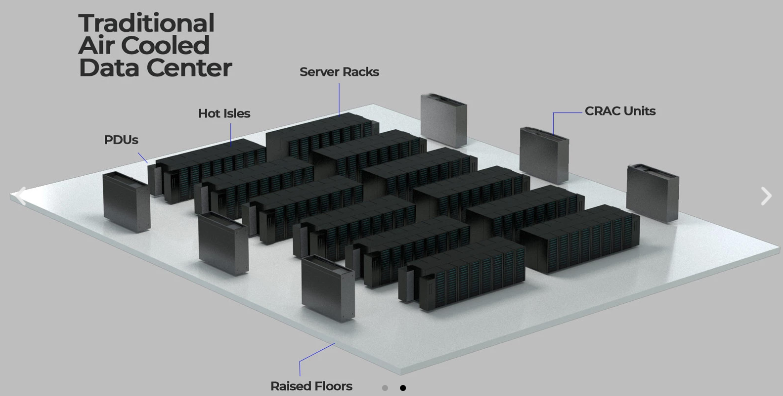

Source: https://midasimmersion.com
MIDAS Immersion Cooling is doing just that. With its new Full Maintenance Suite, the Texas-based pioneer in thermal management has just announced a breakthrough, it claims is the first of its kind: a fully autonomous, closed-loop maintenance suite for liquid immersion data centers.
Designed to eliminate manual intervention altogether, the system not only monitors but actively corrects issues within each immersion tank, cleaning filters, adjusting fluid, removing particulates, and maintaining uptime at scale.
“No one else is doing what we’re doing; this is the first time a system can self-monitor and correct without human touch,” said Michael Wu, CTO of MIDAS.
With its patented architecture already deployed in 200 MW of upcoming capacity, including a major deal with Riot Platforms, MIDAS is not just refining immersion. It’s redefining autonomy in the data center core.
Beyond the Tank: MIDAS and the Maintenance Problem
Immersion cooling has long promised to rewrite the rules of thermal management, but one persistent barrier has held it back: Maintenance.
While liquid submersion dramatically reduces the need for air-based infrastructure, fans, chillers, ducts, and raised floors, it introduces an entirely new class of upkeep challenges.
Dielectric fluids degrade. Filters clog with particulates. Fluid levels fluctuate due to evaporation or leakage. And worst of all, these issues often go unnoticed until thermal performance dips or downtime strikes.
These aren’t theoretical concerns. Real-world operators, from crypto mining farms to experimental edge nodes, have faced recurring fluid contamination, microleaks, and filtration failures.
One U.S.-based mining deployment, for instance, reported halting operations every few weeks just to clean tanks and swap clogged filters, burning both uptime and money.
This is the problem MIDAS Immersion Cooling set out to solve. Based in Texas and backed by foundational patents in immersion infrastructure, MIDAS approached the challenge not as an afterthought, but as the core of its product philosophy. Instead of building a cooling system that merely performs well, they engineered one that can sustain itself.
“At MIDAS, we understand that maintaining peak performance in a liquidimmersion environment requires purpose-built equipment,” said Scott Sickmiller, CEO of MIDAS. “Our new Suite combines a state-of-the-art cordless server lift with tested Byte Bath… Clients have asked for tools allowing them to operate an Immersion Cooled Data Center similar to an Air-Cooled Data Center. This Suite brings this want to a reality.”
The result is the Full Maintenance Suite, a fully autonomous, closed-loop service layer embedded within every MIDAS immersion deployment. The system doesn’t just observe, it corrects.
Built-in leak detection sensors continuously scan for microfractures or seal weaknesses, detecting faults before they lead to failure.
A dedicated fluid purification circuit actively filters contaminants on the fly, extending fluid lifespan without disrupting compute loads. This helps maintain thermal conductivity while reducing service intervals.
In parallel, an automated top-off mechanism ensures fluid levels remain precisely balanced across all tanks, counteracting losses due to evaporation or thermal cycling.
All of this is orchestrated through an AI-powered dashboard that delivers real-time diagnostics, predictive alerts, and centralized control over modular deployments. Whether managing a handful of edge enclosures or a multi-megawatt hyperscale array, operators can rely on the system to respond faster than human technicians ever could.
More than a bolt-on patchwork of tools, MIDAS’s maintenance architecture is built into the very DNA of its cooling system.
By eliminating routine manual intervention, no more lifts, flushes, or valve checks are required. MIDAS isn’t just reducing overhead. It’s enabling immersion at scale. For dense, mission-critical workloads, where uptime and thermal consistency are paramount, a cooling layer that can maintain itself is nothing short of transformational.
Built Into the Fluid: A System Designed for Autonomy
At the heart of MIDAS’s breakthrough is not just clever engineering, but a foundational shift in how cooling systems are conceived. Unlike traditional liquid-cooled setups, where maintenance tools are bolted on later, MIDAS designed its entire architecture with serviceability and fluid intelligence built in, quite literally, into the fluid loop itself.
The company’s approach is protected by two key patents — US 10,405,457 B2 and US 10,820,446 B2, which detail a modular immersion tank design paired with integrated fluid management and monitoring subsystems.
These aren’t superficial add-ons, but embedded capabilities: every tank, pipe, and sensor is part of a unified system that senses, adjusts, and optimizes in real time.
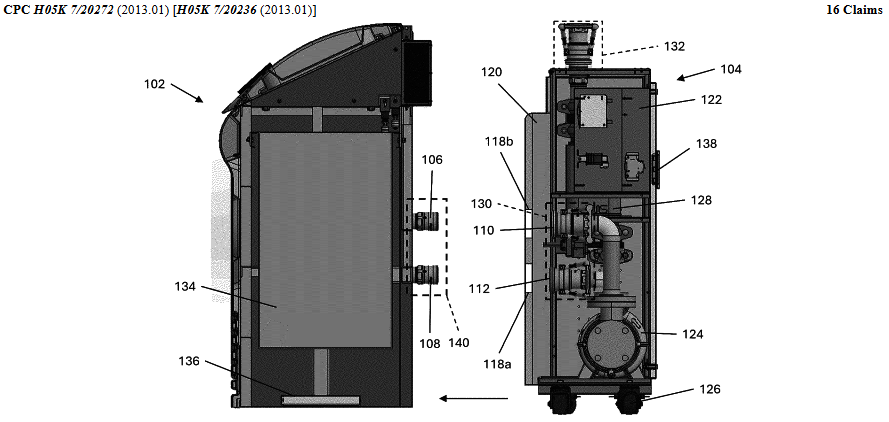
One of the innovations MIDAS introduced is a closed-loop modular bath, a sealed chamber with dynamic thermal feedback that adjusts flow rates and filtration in response to compute density and heat load. This allows each node to behave like an intelligent cell within a larger organism, balancing thermal load and fluid quality on its own.
Paired with smart manifolds, in-line purifiers, and pressure-regulated flow valves, the system becomes self-aware and self-healing. If a node runs hot, it reroutes coolant. If the fluid becomes imbalanced, it triggers purification. If a seal degrades, microfracture sensors trip alerts before any breach occurs. All of this happens with minimal operator input.
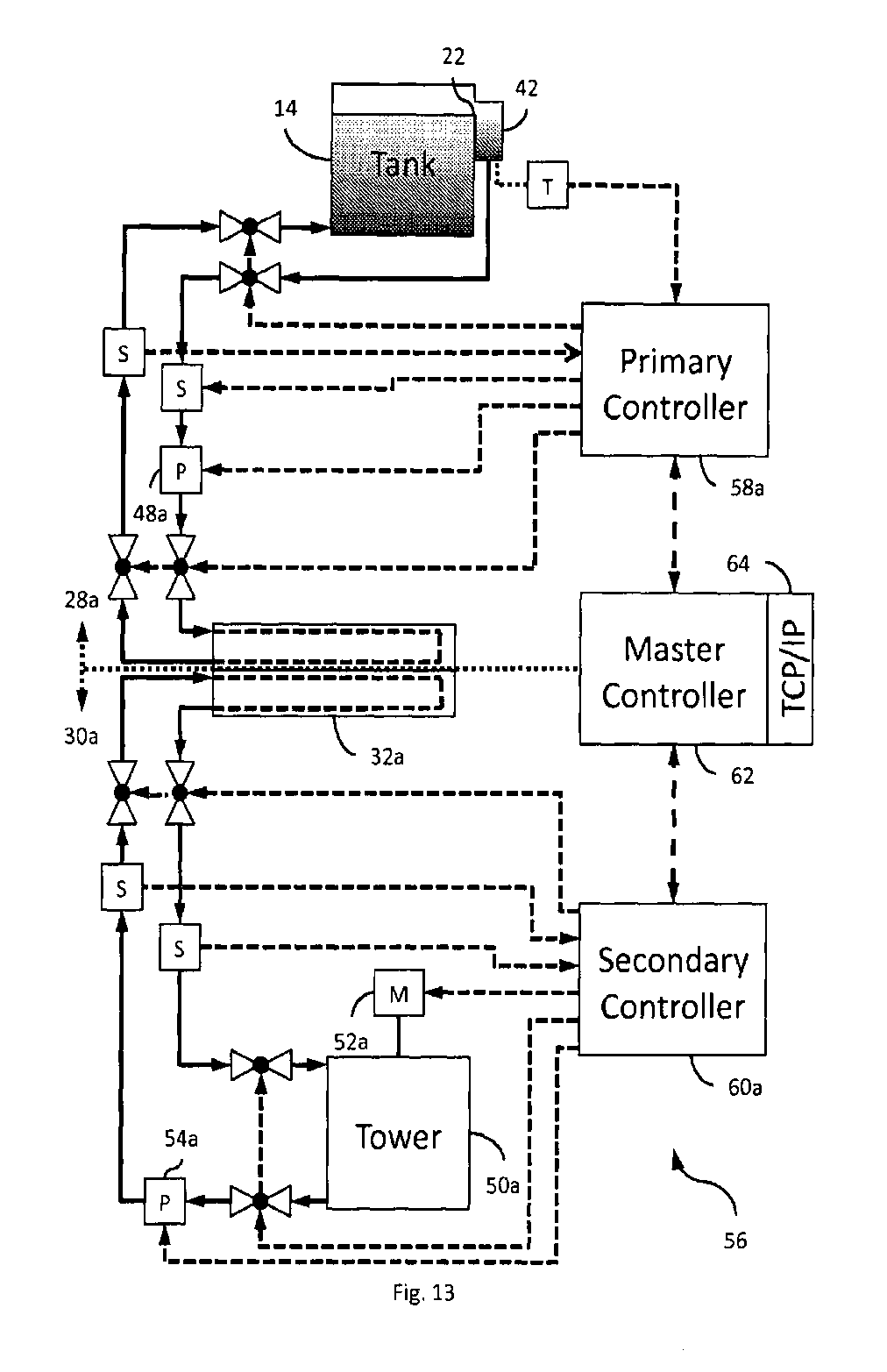
But the real genius is how it scales. Each MIDAS tank acts as a plug-and-play unit that can interface with a central control layer or run semi-autonomously in edge deployments. This makes the architecture just as viable for an off-grid AI pod in the desert as it is for a multi-megawatt core facility.
By embedding intelligence into the coolant layer itself, MIDAS turns a passive cooling solution into an active infrastructure layer, one that reduces labor, minimizes downtime, and learns from its own operational patterns.
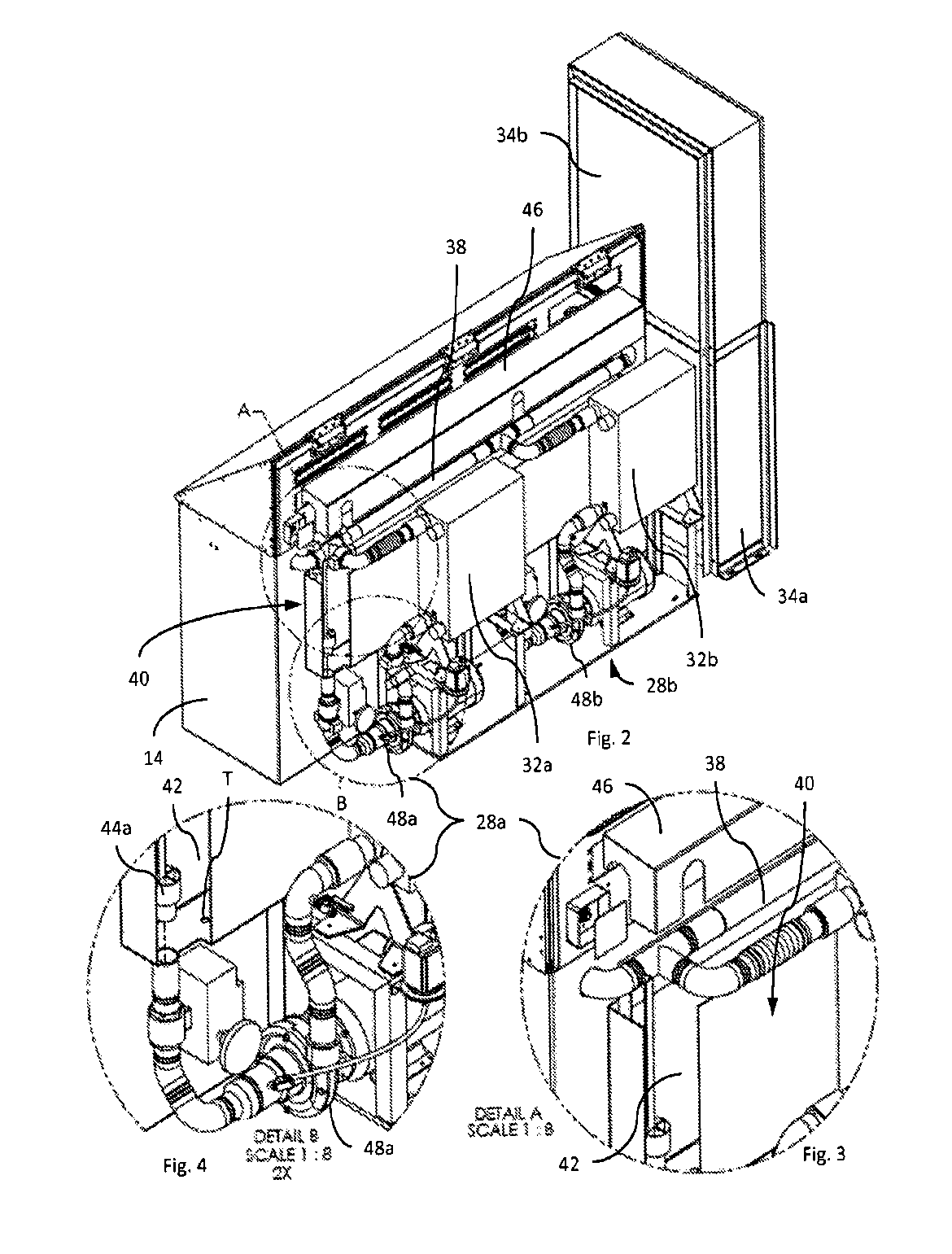
This is more than thermal design. It’s infrastructure biology.
ASICE 2.0
Purpose-Built Tanks for Self-Governance: The tank that knows how to cool and clean itself
ASICE 2.0 marks a significant evolution in MIDAS’s immersion tank architecture. It’s not just an upgrade, it’s a purpose-built enclosure engineered for autonomous intelligence and high-density performance. As a MIDAS blog explains,
“At the heart of the Midas ASICE 2.0 Tank lies a formidable 150 kW cooling capacity per tank, designed to accommodate ASIC miners of various sizes. Its dual-loop system is the key to optimal scalability and resilience.”
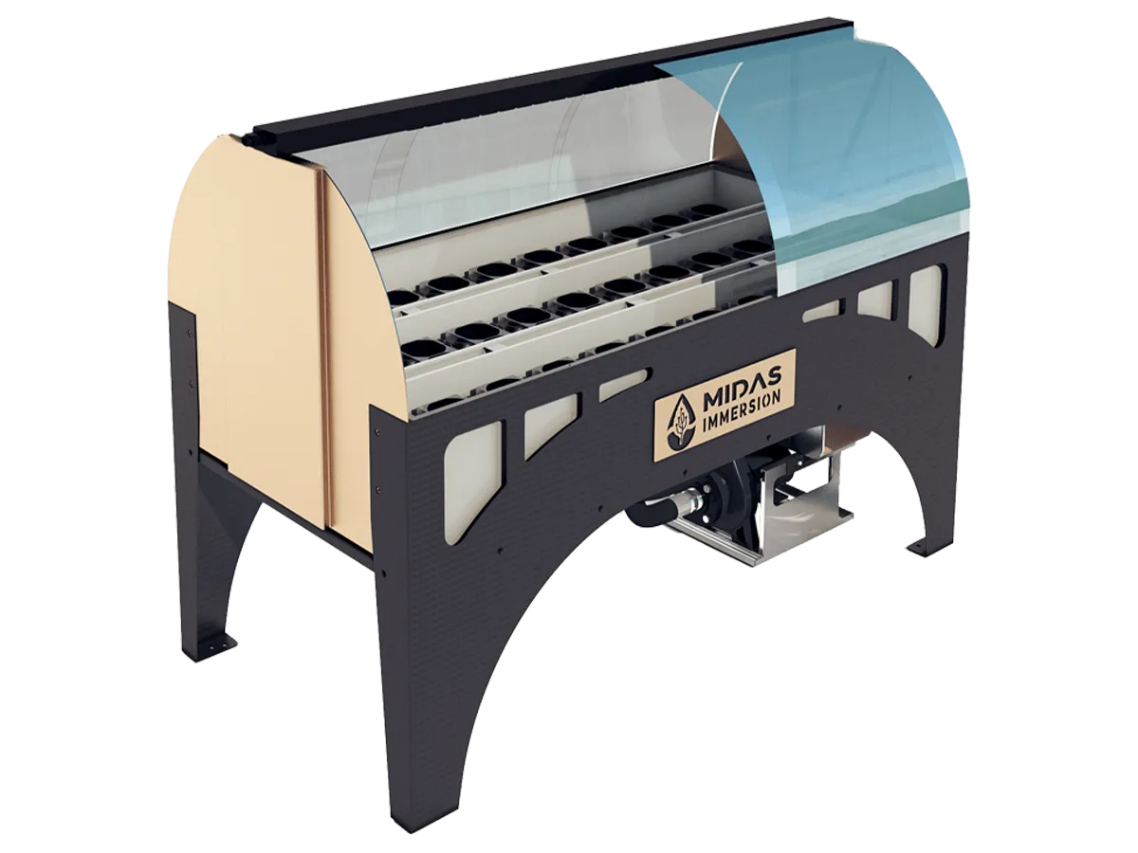
Each ASICE 2.0 tank is a modular, sealed unit, purpose-built to eliminate dielectric overflow, fluid contamination, and the need for complicated external plumbing. This tightly sealed design not only prevents evaporation and debris ingress but also allows the Full Maintenance Suite to maintain precise fluid levels and quality in a predictable, self-contained environment.
Engineered specifically for high-performance ASIC workloads, ASICE 2.0 supports ASIC-ready form factors. It accommodates densely packed compute modules with optimized fluid contact zones and bespoke flow geometries, ensuring consistent thermal performance for next-gen mining and AI hardware.
These tanks are more than cooling vessels; they are autonomous cells of a distributed thermal control network. Integrated sensors continuously monitor pressure differentials, temperature gradients, fluid clarity, and seal integrity, streaming data into the MIDAS management platform with zero human input required.
As MIDAS states on their site:
“It’s designed to minimize dielectric fluid contamination and eliminate dielectric overflow, a common setback with single-loop systems.”
Tied directly into the Full Maintenance Suite, ASICE 2.0 supports per-tank autonomy at scale. Whether deployed individually in remote edge locations or clustered in hyperscale environments, these tanks self-balance flow, filtration, and leak response without centralized oversight.
In essence, ASICE 2.0 tanks cool, clean, and govern themselves, a foundational element in MIDAS’s broader vision of autonomous, infrastructure-grade immersion cooling.
Intelligence Without Interruption
If it works in mining, it’ll work anywhere.
MIDAS’s Full Maintenance Suite does more than cool, it thinks. At its core lies a smart orchestration layer that monitors live thermal, pressure, and fluid integrity data and takes automated action, without ever disrupting compute workloads.
According to MIDAS,
“We designed the suite to eliminate dependency on human timing. You don’t schedule maintenance, it happens, continuously, based on live thresholds.”
Every parameter, from temperature gradients to micro-leak indicators, is tracked in real time, enabling predictive alerts, dynamic flow adjustments, and preemptive fluid purification. The MIDAS dashboard is more than a monitoring tool; it’s a command center that triggers maintenance routines autonomously, reserving human involvement for only the most critical events.
This level of intelligent orchestration isn’t theoretical; it’s operational, thanks to a large-scale deployment with one of the world’s toughest compute environments.
RIOT Platforms: 200 MW in the Real World
In July 2023, RIOT Platforms signed a long-term supply agreement for 200 MW of MIDAS’s ASICE 2.0 immersion cooling systems, complete with Full Maintenance Suite integration, for its Corsicana, Texas, facility. This initial order brings MIDAS’s total deployed capacity to over 500 MW, with an option for an additional 400 MW.
Crypto mining imposes extreme, continuous thermal load, and near-zero tolerance for downtime. Yet at Corsicana, MIDAS systems autonomously manage per-tank flow, filtration, leak defence, and fault preemption, all without any centralized manual oversight.
As RIOT’s CEO, Jason Les, commented, “Partnering with Midas will enhance Riot’s approach in diversifying our immersion capabilities to ensure efficiency across our mining infrastructure,” he continued, “prolonging the life of our miners, while also increasing our ability to maintain low cost of power by eliminating the need for costly forcedair cooling.”
RIOT has energized a 400 MW substation for Corsicana, half of which powers the MIDAS tanks, and the remaining is intended for future phases. In other words, MIDAS is not just supplying tanks, it's fuelling a multi-hundred-megawatt, heat-dense facility where autonomous cooling isn’t a luxury, it’s a necessity.
If MIDAS can run continuously under these conditions, the case for deploying it in AI farms, hyperscale edge clusters, or even off-grid sovereign data centers becomes compellingly clear.
From Cooling Hardware to Fluidic Intelligence
MIDAS is no longer just building tanks; it is redefining what immersion cooling means. From its foundational patents to the orchestration layers now active across hundreds of megawatts of infrastructure, the company is transforming immersion into a self-governing thermal system.
This evolution reflects a broader shift in digital infrastructure: where power systems are becoming predictive, cooling systems are becoming intelligent, and maintenance routines are increasingly driven by autonomous dashboards and real-time telemetry. In this architecture, cooling ceases to be a passive, background utility and instead emerges as an active, decision-making system, one that is continuously self-adjusting, invisible in operation, and exacting in response.
MIDAS’s Full Maintenance Suite doesn’t just run in the background; it interprets thermal signals, tracks degradation vectors, and initiates preventive actions without waiting for a human to notice. As a result, maintenance becomes ambient rather than scheduled, while control becomes embedded rather than external.
The old paradigm, infrastructure built to be monitored, is quietly giving way to a new one: infrastructure built to monitor, heal, and sustain itself.
“MIDAS isn’t just cooling hardware. It’s the nervous system for the next generation of autonomous computing.”
